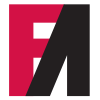
If your LG fridge isn’t cooling, you have no need to stress. This guide will tell you exactly what to do.
Simply follow our instructions in this guide and you’ll find the root cause of the problem and hopefully fix it quickly so you can get your fridge working to its optimal level again.
This guide covers all major LG fridge models, including:
LFX21976ST
LFX25950SB
LFX25950SW
LFX25950TT
LFX25976ST
LFX25991ST
LFX28978SB
LFX28978SW
LFX28979ST
LFX31925ST
LFX31935ST
LFX31945ST
LMX25984SW
LMX25986ST
LMX28988SB
LMX28988ST
LMX28988SW
LRDC22743ST
LRDC22744ST
LRSC26980SB
LSFS213ST
Clean the condenser coils
One of the most common causes of an LG fridge not cooling is when the condenser coils get dirty or covered in ice/frost. When this happens, your fridge won’t be able to cool down to the correct temperature.
The easiest way to clean the condenser coils is to:
- Pull your LG fridge out from the wall and unplug it.
- If your fridge has a cover over the condenser coils, remove it.
- Check the condenser coils for ice/frost. If ice/frost is present, leave the fridge unplugged for one hour or until the coils defrost. If the coils are covered in dust, clean them thoroughly.
- Once the coils are free of ice/frost and/or dirt, plug your fridge back in and check if the problem has been solved. If the fridge doesn’t cool to the correct temperature, proceed to the next step.
Check that the condenser fan works
Check that the condenser fan is working properly. If it isn’t, you’ll need to replace it. The condenser fan is important because it helps the condenser coils stay cool, which in turn helps your fridge stay cool.
To check if the condenser fan is working, follow these instructions:
- Move the fridge away from the wall and unplug it. Then locate the condenser fan.
- First, remove the cover from the fan and check if you can manually rotate the blades 360 degrees without obstruction. If something is obstructing the blades, remove the obstruction.
- Next, use a multimeter to test the fan for continuity. If the fan fails the continuity test, replace it. If it passes the test, it’s working so you can proceed to the next step.
- If you replace the fan, check that your LG fridge now cools properly. If it still doesn’t cool, proceed to the next step.
Check that the evaporator fan works
The evaporator fan distributes cold air from the freezer into the fridge. If it becomes defective, your fridge might not stay cold, or it may not cool down at all.
To check if the evaporator fan is working, follow these instructions:
- Pull your fridge out from the wall and unplug it. Then locate the evaporator fan in your freezer.
- Remove the cover from the fan and check if you can rotate the blades 360 degrees without obstruction. If something is obstructing the blades, remove the obstruction.
- Next, use a multimeter to test the fan for continuity. If the fan fails the continuity test, replace it. If it passes the test, it’s working so you can proceed to the next step.
- If you replace the fan, check that your LG fridge now cools properly. If it still doesn’t cool, proceed to the next step.
Make sure the start relay works
The start relay helps start the compressor in your fridge. The compressor is the most important component in your fridge when it comes to keeping it cool. If the start relay stops working, the compressor will too.
To check if the start relay is working correctly, follow these instructions:
- Pull your fridge out from the wall and unplug it. Then locate the start relay.
- Next, use a multimeter to test the start relay for continuity. If the start relay fails the continuity test, replace it. If it passes the test, it’s working so you can proceed to the next step.
- If you replace the start relay, check that your LG fridge now cools properly. If it still doesn’t cool, proceed to the next step.
Make sure the temperature control thermostat works
Along with the start relay, the temperature control thermostat helps the compressor operate. It also helps control the evaporator fan motor and the condenser fan motor. When the thermostat stops working your LG fridge will fail to stay cool.
To check if the temperature control thermostat is working, follow these instructions:
- Unplug your fridge and locate the thermostat inside the fridge’s food compartment.
- First, move the thermostat from its lowest setting to its highest setting. If you hear a clicking sound, this means the thermostat is working correctly, and you can proceed to the next step.
- If you don’t hear a clicking sound, use a multimeter to test the thermostat for continuity. If the thermostat fails the continuity test, replace it. If it passes the test, it’s working so you can proceed to the next step.
- If you replace the temperature control thermostat, check that your LG fridge now cools properly. If it still doesn’t cool, proceed to the next step.
Make sure the start capacitor works
The start capacitor is another important component that helps the compressor start. If it becomes defective the compressor might not work and your fridge will fail to stay cool.
To check if the start capacitor is working, follow these instructions:
- Pull your fridge out from the wall and unplug it. Then locate the start capacitor.
- Use a multimeter to test the start capacitor for continuity. If the capacitor fails the continuity test, replace it. If it passes the test, it’s working so you can proceed to the next step.
- If you replace the start capacitor, check that your LG fridge now coos properly. If it still doesn’t cool, proceed to the next step.
Make sure the thermistor works
The thermistor keeps track of the temperature in your fridge and sends a signal to the main control board letting it know the temperature so the control board can turn other components on and off as needed to regulate your fridge’s temperature. When the thermistor stops working, your LG fridge might not cool to the correct temperature, or it may not cool at all.
To check if the thermistor is working, follow these instructions:
- Pull your fridge out from the wall and unplug it. Then locate the thermistor.
- Use a multimeter to test the thermistor for continuity. If the thermistor fails the continuity test, replace it. If it passes the test, it’s working so you can proceed to the next step.
- If you replace the thermistor, check that your LG fridge now cools properly. If it still doesn’t cool, proceed to the next step.
Make sure the compressor works
The compressor is the most important component in your fridge. It’s responsible for keeping the fridge cool by circulating refrigerant through the condenser coils and evaporator fan. If the compressor breaks down, your fridge won’t cool.
To check if the compressor is working, follow these instructions:
- Pull your fridge out from the wall and unplug it. Then locate the compressor.
- Locate the electrical pins on the side of the compressor. Then place the two probes of your multimeter onto the electrical pins.
- If you detect an open circuit, the compressor will need to be replaced by a qualified technician. However, given the high cost of replacing the compressor, you may be better off buying a new fridge. If the compressor is working, proceed to the final step.
Consider installing a new main control board
If you still haven’t found the reason for your LG fridge not cooling, then your final repair option is to replace the main control board. However, there’s no guarantee that replacing the control board will work so you may be better off buying a new fridge, especially if your LG fridge is an older model.

Your Guide to Whirlpool Microwave Replacement Parts

What to Do When Your Kenmore Dryer Won’t Start

How to Resolve the LG Washer LE Error Code

Why Does My Oven Smell Like Gas? Causes and What to Do

Maytag Dryer Not Heating? Here’s How to Fix It

6 Common Reasons Your Speed Queen Dryer Isn’t Heating

8 Reasons Your Samsung Refrigerator Is Not Cooling

9 Most Reliable Washer and Dryer Brands

How to Get Ink out of Your Dryer the Easy Way

Why Is My Fridge Making Noise That Stops When the Door Is Open?

Frigidaire Refrigerator Error Code H1: Causes & Solutions

How to Clean a Dryer Vent Without Moving the Dryer

9 Reasons Your LG Refrigerator Isn’t Cooling

LG Refrigerator Not Making Ice? Here’s What To Do!


